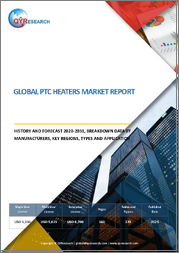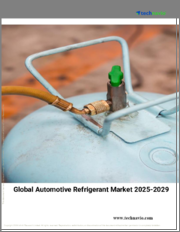
|
시장보고서
상품코드
1571502
자동차 HVAC 시장 규모, 점유율 및 동향 분석 보고서 : 기술별, 차량별, 지역별, 부문별 예측(2024-2030년)Automotive HVAC Market Size, Share & Trends Analysis Report By Technology (Automatic, Manual/Semi-automatic), By Vehicle (Passenger Cars, LCVs, HCVs), By Region, And Segment Forecasts, 2024 - 2030 |
||||||
자동차 HVAC 시장 성장 및 동향 :
Grand View Research Inc.의 조사에 따르면, 세계 자동차 HVAC 시장 규모는 2030년까지 795억 9,000만 달러에 달할 것으로 예상되며, 예측 기간 동안 CAGR 6.7%로 확대될 것으로 예상됩니다.
이 시장을 주도하는 것은 혁신적인 저연비, 친환경 HVAC 솔루션 시장 개척과 전 세계 승용차 수요의 급격한 증가입니다. 가처분 소득 증가와 고급스럽고 편안한 여행에 대한 선호도가 높아짐에 따라 자동차 HVAC 시장의 성장을 가속할 것으로 예상됩니다.
현재 자동차 HVAC 장치는 승용차의 필수적인 부분으로 자리 잡았으며, 소비자의 구매 행동에 영향을 미치는 편의 기능을 제공합니다. 지구 온난화에 대한 우려가 높아지면서 기온이 상승하고, 이에 따라 차량 내 환경과 쾌적성 향상에 대한 요구가 증가하고 있습니다. 기술 혁신과 R&D 활동에 대한 막대한 투자는 연비 효율이 높고 친환경적인 HVAC 유닛의 기술 혁신과 더 나은 적응성을 위해 시스템의 경량화 및 소형화를 실현하는 혁신적인 설계로 이어지고 있습니다.
렌터카 산업의 번영과 평균 탑승 시간 증가로 인한 자가용 수요 급증은 시장 성장을 가속할 것으로 예상됩니다. 또한, 저렴한 자동차 금융 제도와 대중교통보다 자가용을 이용하는 경향이 증가함에 따라 자동차 HVAC 시장의 성장을 가속할 수 있습니다. 아시아태평양은 주요 자동차 제조업체의 존재와 광범위한 소비자층이 자동차 수요를 촉진하고 있어 예측 기간 동안 세계 시장을 지배할 것으로 예상됩니다. 냉매의 환경 영향과 높은 유지보수 비용에 대한 우려가 높아지면서 자동차 HVAC 시장의 성장을 저해할 수 있습니다.
자동차 HVAC 시장 보고서 하이라이트
- 승용차는 2030년까지 시장을 독점할 가능성이 높습니다. 인력의 이동 수요 증가와 도시화의 진전이 이 부문의 성장에 기여할 것입니다.
- 거시경제 상황과 인도의 광산 채굴 금지와 같은 규제가 대형 상용차(HCV) 수요에 영향을 미칠 수 있음. 특히 농촌 지역의 LCV 수요 증가는 이 부문의 성장을 보완할 것으로 예상됩니다.
- 전기차와 하이브리드 자동차의 인기가 급증하고 있는 것도 시장 성장에 긍정적인 영향을 미칠 수 있습니다. 인도, 중국 등의 국가에서는 프리미엄 자동차 브랜드의 채택이 증가하고 있으며, 이는 시장 성장을 가속할 것으로 추정됩니다.
- 아시아태평양 자동차 HVAC 시장은 2023년 49.0%의 가장 큰 시장 점유율을 기록할 것으로 예상됩니다. 중국, 인도, 일본 등의 국가에서 중산층이 확대되면서 HVAC 시스템을 포함한 최신 기능을 갖춘 자동차에 대한 수요가 증가하고 있습니다.
목차
제1장 조사 방법과 범위
제2장 주요 요약
제3장 자동차 HVAC 시장 변수, 동향, 범위
- 시장 서론/계통 전망
- 시장 규모와 성장 전망
- 시장 역학
- 시장 성장 촉진요인 분석
- 시장 성장 억제요인 분석
- 자동차 HVAC 시장 분석 툴
- Porter의 Five Forces 분석
- PESTEL 분석
제4장 자동차 HVAC 시장 : 기술 추정·동향 분석
- 부문 대시보드
- 자동차 HVAC 시장 : 기술 변동 분석, 2023년 및 2030년
- 자동
- 수동/반자동
제5장 자동차 HVAC 시장 : 차량 추정·동향 분석
- 부문 대시보드
- 자동차 HVAC 시장 : 차량 변동 분석, 2023년 및 2030년
- 승용차
- LCV
- HCV
제6장 자동차 HVAC 시장 : 지역추 정·동향 분석
- 자동차 HVAC 시장 점유율, 지역별, 2023년 및 2030년
- 북미
- 미국
- 캐나다
- 멕시코
- 유럽
- 영국
- 독일
- 프랑스
- 아시아태평양
- 중국
- 일본
- 인도
- 한국
- 호주
- 라틴아메리카
- 브라질
- 중동 및 아프리카
- 사우디아라비아
- 아랍에미리트(UAE)
- 남아프리카공화국
제7장 경쟁 구도
- 주요 시장 진출기업의 최근 동향과 영향 분석
- 기업 분류
- 기업 히트맵 분석
- 기업 개요
- Denso Corporation
- Valeo
- MAHLE GmbH
- Hanon Systems
- Sanden Holdings Corporation
- Calsonic Kansei Corporation
- Keihin Corporation
- Mitsubishi Heavy Industries
- Bros Fahzeugteile
- Eberspaher Gruppe
Automotive HVAC Market Growth & Trends:
The global automotive HVAC market size is estimated to reach USD 79.59 billion by 2030, according to a study by Grand View Research Inc., expanding at a CAGR of 6.7% during the forecast period. The market is driven by increasing development of innovative, fuel-efficient, and eco-friendly HVAC solutions coupled with surging global demand for passenger vehicles. Rising disposable income and growing inclination towards more luxurious and comfortable travel are anticipated to foster the growth of the automotive HVAC market.
In the current scenario, an automotive HVAC unit has become an integral part of passenger vehicles, offering comfort features that influence consumer buying behavior. Rising concerns regarding global warming are leading to an increase in temperature levels, which in turn is resulting in increased demand for enhanced interior environment and comfort. Technological innovations and substantial investments in R&D activities are leading to the innovation of fuel-efficient and eco-friendly HVAC units coupled with innovative designs to lower the weight and size of systems for better adaptability.
Spiraling demand for private vehicles owing to the flourishing car rental industry and rising average time spent on vehicles is expected to boost the growth of the market. Additionally, affordable automobile finance schemes and increasing preference to use private vehicles rather than public transport can also favor the growth of the automotive HVAC market. Asia Pacific is anticipated to dominate the global market throughout the forecast horizon owing to the presence of key automobile manufacturers coupled with a broader consumer base boosting vehicle demand. Rising concerns about the environmental effects of refrigerants and high maintenance costs can hinder the growth of the automotive HVAC market.
Automotive HVAC Market Report Highlights:
- Passenger car is likely to dominate the market through 2030. Increasing personnel mobility needs and growing urbanization will contribute to the growth of the segment
- Macroeconomic conditions and regulations such as the mining ban in India may affect the demand for Heavy Commercial Vehicle (HCV). Increasing demand for LCVs, particularly in rural areas, is projected to supplement the growth of the segment
- The burgeoning popularity of electric or hybrid vehicles can also positively influence the growth of the market. Increasing adoption of premium automobile brands in countries such as India and China are estimated to bolster the growth of the market
- Asia Pacific automotive HVAC market registered the largest market revenue share of 49.0% in 2023. The expanding middle class in countries such as China, India, and Japan is boosting the demand for cars with modern features, including HVAC systems
Table of Contents
Chapter 1. Methodology and Scope
- 1.1. Market Segmentation and Scope
- 1.2. Market Definitions
- 1.3. Research Methodology
- 1.3.1. Information Procurement
- 1.3.2. Information or Data Analysis
- 1.3.3. Market Formulation & Data Visualization
- 1.3.4. Data Validation & Publishing
- 1.4. Research Scope and Assumptions
- 1.4.1. List of Data Sources
Chapter 2. Executive Summary
- 2.1. Market Outlook
- 2.2. Segment Outlook
- 2.3. Competitive Insights
Chapter 3. Automotive HVAC Market Variables, Trends, & Scope
- 3.1. Market Introduction/Lineage Outlook
- 3.2. Market Size and Growth Prospects (USD Billion)
- 3.3. Market Dynamics
- 3.3.1. Market Drivers Analysis
- 3.3.2. Market Restraints Analysis
- 3.4. Automotive HVAC Market Analysis Tools
- 3.4.1. Porter's Analysis
- 3.4.1.1. Bargaining power of the suppliers
- 3.4.1.2. Bargaining power of the buyers
- 3.4.1.3. Threats of substitution
- 3.4.1.4. Threats from new entrants
- 3.4.1.5. Competitive rivalry
- 3.4.2. PESTEL Analysis
- 3.4.2.1. Political landscape
- 3.4.2.2. Economic and Social landscape
- 3.4.2.3. Technological landscape
- 3.4.2.4. Environmental landscape
- 3.4.2.5. Legal landscape
- 3.4.1. Porter's Analysis
Chapter 4. Automotive HVAC Market: Technology Estimates & Trend Analysis
- 4.1. Segment Dashboard
- 4.2. Automotive HVAC Market: Technology Movement Analysis, USD Billion, 2023 & 2030
- 4.3. Automatic
- 4.3.1. Automatic Market Revenue Estimates and Forecasts, 2018 - 2030 (USD Billion)
- 4.4. Manual/Semi-automatic
- 4.4.1. Manual/Semi-automatic Market Revenue Estimates and Forecasts, 2018 - 2030 (USD Billion)
Chapter 5. Automotive HVAC Market: Vehicle Estimates & Trend Analysis
- 5.1. Segment Dashboard
- 5.2. Automotive HVAC Market: Vehicle Movement Analysis, USD Billion, 2023 & 2030
- 5.3. Passenger Cars
- 5.3.1. Passenger Cars Market Revenue Estimates and Forecasts, 2018 - 2030 (USD Billion)
- 5.4. LCVs
- 5.4.1. LCVs Market Revenue Estimates and Forecasts, 2018 - 2030 (USD Billion)
- 5.5. HCVs
- 5.5.1. HCVs Market Revenue Estimates and Forecasts, 2018 - 2030 (USD Billion)
Chapter 6. Automotive HVAC Market: Regional Estimates & Trend Analysis
- 6.1. Automotive HVAC Market Share, By Region, 2023 & 2030, USD Billion
- 6.2. North America
- 6.2.1. North America Automotive HVAC Market Estimates and Forecasts, 2018 - 2030 (USD Billion)
- 6.2.2. U.S.
- 6.2.2.1. U.S. Automotive HVAC Market Estimates and Forecasts, 2018 - 2030 (USD Billion)
- 6.2.3. Canada
- 6.2.3.1. Canada Automotive HVAC Market Estimates and Forecasts, 2018 - 2030 (USD Billion)
- 6.2.4. Mexico
- 6.2.4.1. Mexico Automotive HVAC Market Estimates and Forecasts, 2018 - 2030 (USD Billion)
- 6.3. Europe
- 6.3.1. Europe Automotive HVAC Market Estimates and Forecasts, 2018 - 2030 (USD Billion)
- 6.3.2. U.K.
- 6.3.2.1. U.K. Automotive HVAC Market Estimates and Forecasts, 2018 - 2030 (USD Billion)
- 6.3.3. Germany
- 6.3.3.1. Germany Automotive HVAC Market Estimates and Forecasts, 2018 - 2030 (USD Billion)
- 6.3.4. France
- 6.3.4.1. France Automotive HVAC Market Estimates and Forecasts, 2018 - 2030 (USD Billion)
- 6.4. Asia Pacific
- 6.4.1. Asia Pacific Automotive HVAC Market Estimates and Forecasts, 2018 - 2030 (USD Billion)
- 6.4.2. China
- 6.4.2.1. China Automotive HVAC Market Estimates and Forecasts, 2018 - 2030 (USD Billion)
- 6.4.3. Japan
- 6.4.3.1. Japan Automotive HVAC Market Estimates and Forecasts, 2018 - 2030 (USD Billion)
- 6.4.4. India
- 6.4.4.1. India Automotive HVAC Market Estimates and Forecasts, 2018 - 2030 (USD Billion)
- 6.4.5. South Korea
- 6.4.5.1. South Korea Automotive HVAC Market Estimates and Forecasts, 2018 - 2030 (USD Billion)
- 6.4.6. Australia
- 6.4.6.1. Australia Automotive HVAC Market Estimates and Forecasts, 2018 - 2030 (USD Billion)
- 6.5. Latin America
- 6.5.1. Latin America Automotive HVAC Market Estimates and Forecasts, 2018 - 2030 (USD Billion)
- 6.5.2. Brazil
- 6.5.2.1. Brazil Automotive HVAC Market Estimates and Forecasts, 2018 - 2030 (USD Billion)
- 6.6. Middle East and Africa
- 6.6.1. Middle East and Africa Automotive HVAC Market Estimates and Forecasts, 2018 - 2030 (USD Billion)
- 6.6.2. Saudi Arabia
- 6.6.2.1. Saudi Arabia Automotive HVAC Market Estimates and Forecasts, 2018 - 2030 (USD Billion)
- 6.6.3. UAE
- 6.6.3.1. UAE Automotive HVAC Market Estimates and Forecasts, 2018 - 2030 (USD Billion)
- 6.6.4. South Africa
- 6.6.4.1. South Africa Automotive HVAC Market Estimates and Forecasts, 2018 - 2030 (USD Billion)
Chapter 7. Competitive Landscape
- 7.1. Recent Developments & Impact Analysis by Key Market Participants
- 7.2. Company Categorization
- 7.3. Company Heat Map Analysis
- 7.4. Company Profiles
- 7.4.1. Denso Corporation
- 7.4.1.1. Participant's Overview
- 7.4.1.2. Financial Performance
- 7.4.1.3. Product Benchmarking
- 7.4.1.4. Recent Developments/ Strategic Initiatives
- 7.4.2. Valeo
- 7.4.2.1. Participant's Overview
- 7.4.2.2. Financial Performance
- 7.4.2.3. Product Benchmarking
- 7.4.2.4. Recent Developments/ Strategic Initiatives
- 7.4.3. MAHLE GmbH
- 7.4.3.1. Participant's Overview
- 7.4.3.2. Financial Performance
- 7.4.3.3. Product Benchmarking
- 7.4.3.4. Recent Developments/ Strategic Initiatives
- 7.4.4. Hanon Systems
- 7.4.4.1. Participant's Overview
- 7.4.4.2. Financial Performance
- 7.4.4.3. Product Benchmarking
- 7.4.4.4. Recent Developments/ Strategic Initiatives
- 7.4.5. Sanden Holdings Corporation
- 7.4.5.1. Participant's Overview
- 7.4.5.2. Financial Performance
- 7.4.5.3. Product Benchmarking
- 7.4.5.4. Recent Developments/ Strategic Initiatives
- 7.4.6. Calsonic Kansei Corporation
- 7.4.6.1. Participant's Overview
- 7.4.6.2. Financial Performance
- 7.4.6.3. Product Benchmarking
- 7.4.6.4. Recent Developments/ Strategic Initiatives
- 7.4.7. Keihin Corporation
- 7.4.7.1. Participant's Overview
- 7.4.7.2. Financial Performance
- 7.4.7.3. Product Benchmarking
- 7.4.7.4. Recent Developments/ Strategic Initiatives
- 7.4.8. Mitsubishi Heavy Industries
- 7.4.8.1. Participant's Overview
- 7.4.8.2. Financial Performance
- 7.4.8.3. Product Benchmarking
- 7.4.8.4. Recent Developments/ Strategic Initiatives
- 7.4.9. Bros Fahzeugteile
- 7.4.9.1. Participant's Overview
- 7.4.9.2. Financial Performance
- 7.4.9.3. Product Benchmarking
- 7.4.9.4. Recent Developments/ Strategic Initiatives
- 7.4.10. Eberspaher Gruppe
- 7.4.10.1. Participant's Overview
- 7.4.10.2. Financial Performance
- 7.4.10.3. Product Benchmarking
- 7.4.10.4. Recent Developments/ Strategic Initiatives
- 7.4.1. Denso Corporation
(주말 및 공휴일 제외)


















